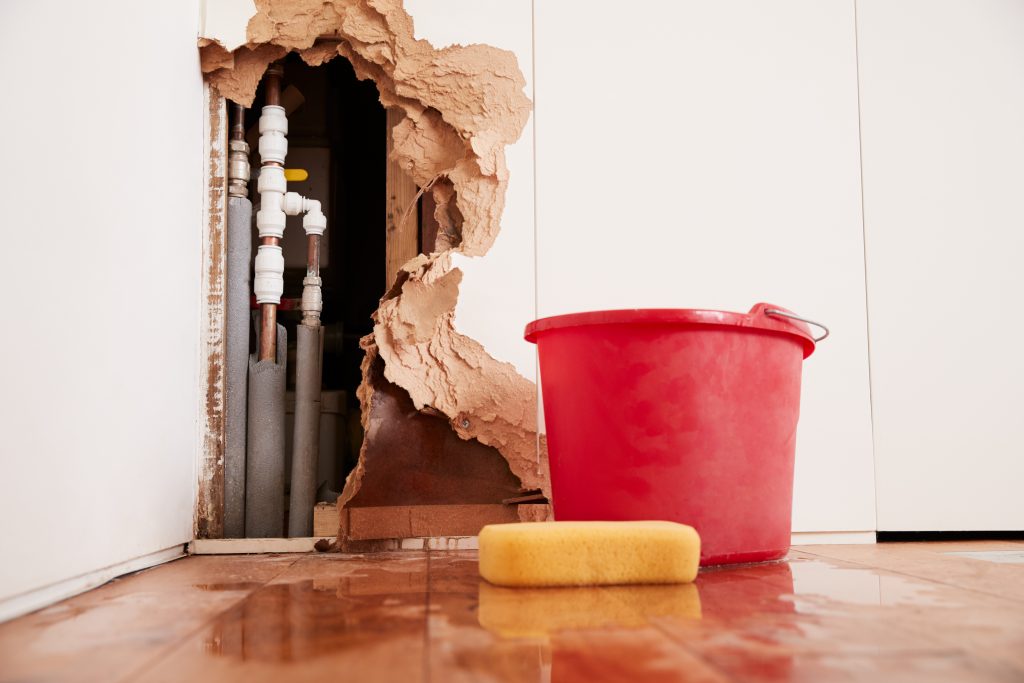How to Check If Your House Has a Hidden Leakage
How to Check If Your House Has a Hidden Leakage
Blog Article
What are your opinions about Top leak detection hacks?

Early discovery of dripping water lines can minimize a potential catastrophe. Some small water leakages might not be visible.
1. Analyze the Water Meter
Every home has a water meter. Inspecting it is a proven manner in which assists you discover leakages. For starters, turn off all the water resources. Make sure no person will flush, utilize the faucet, shower, run the washing maker or dish washer. From there, most likely to the meter and also watch if it will certainly transform. Since no one is using it, there ought to be no activities. If it relocates, that shows a fast-moving leakage. If you detect no changes, wait a hr or 2 as well as inspect back again. This implies you may have a slow leakage that can also be underground.
2. Check Water Intake
If you detect unexpected changes, in spite of your consumption being the very same, it implies that you have leakages in your plumbing system. An unexpected spike in your bill shows a fast-moving leak.
A consistent increase every month, even with the very same practices, reveals you have a slow leak that's additionally gradually rising. Call a plumber to completely examine your building, particularly if you really feel a warm area on your flooring with piping underneath.
3. Do a Food Coloring Test
When it comes to water consumption, 30% comes from toilets. If the color somehow infiltrates your dish during that time without flushing, there's a leak between the storage tank and also dish.
4. Asses Outside Lines
Don't fail to remember to check your outdoor water lines too. Ought to water seep out of the connection, you have a loosened rubber gasket. One small leak can waste tons of water and also increase your water expense.
5. Examine the situation and also examine
Property owners should make it a behavior to inspect under the sink counters and also inside cupboards for any bad odor or mold and mildew growth. These 2 red flags show a leak so punctual interest is required. Doing regular evaluations, also bi-annually, can save you from a significant issue.
Much more notably, if you understand your residence is already old, maintain a watchful eye on your heaters, tubes, pipes and so on. Check for stainings and deteriorating as most devices and pipelines have a life span. They will additionally naturally degrade due to tear as well as put on. Do not wait for it to escalate if you presume dripping water lines in your plumbing system. Call a professional plumber as soon as possible so you don't end up with a horrible mess in your house.
Early discovery of dripping water lines can mitigate a potential disaster. Some small water leaks may not be visible. Inspecting it is a proven means that aids you uncover leakages. One little leak can lose bunches of water and also increase your water costs.
If you believe dripping water lines in your plumbing system, do not wait for it to rise.
WARNING SIGNS OF WATER LEAKAGE BEHIND THE WALL
PERSISTENT MUSTY ODORS
As water slowly drips from a leaky pipe inside the wall, flooring and sheetrock stay damp and develop an odor similar to wet cardboard. It generates a musty smell that can help you find hidden leaks.
MOLD IN UNUSUAL AREAS
Mold usually grows in wet areas like kitchens, baths and laundry rooms. If you spot the stuff on walls or baseboards in other rooms of the house, it’s a good indicator of undetected water leaks.
STAINS THAT GROW
When mold thrives around a leaky pipe, it sometimes takes hold on the inside surface of the affected wall. A growing stain on otherwise clean sheetrock is often your sign of a hidden plumbing problem.
PEELING OR BUBBLING WALLPAPER / PAINT
This clue is easy to miss in rooms that don’t get much use. When you see wallpaper separating along seams or paint bubbling or flaking off the wall, blame sheetrock that stays wet because of an undetected leak.
BUCKLED CEILINGS AND STAINED FLOORS
If ceilings or floors in bathrooms, kitchens or laundry areas develop structural problems, don’t rule out constant damp inside the walls. Wet sheetrock can affect adjacent framing, flooring and ceilings.
https://www.servicemasterbyzaba.com/blog/how-to-detect-water-leakage-in-walls/

As an enthusiastic reader on Leaking water lines, I was thinking sharing that excerpt was worth the trouble. Liked our piece of writing? Please share it. Let somebody else find it. Bless you for your time. Don't hesitate to visit our website back soon.
Report this page